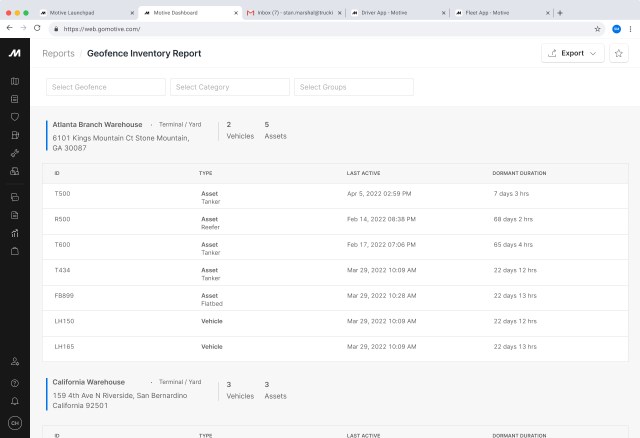The Federal Motor Carrier Safety Administration (FMCSA) is seeking detention data from carriers and other industry stakeholders. The agency is gathering information on dwell times at shipping and receiving facilities and how those delays later impact safety on the highways. Public comments will be accepted until September 8, 2019.
Seth Spiel, Motive’s head of asset management, understands the impact of detention time and highlights the importance of data collection. He explains, “Data and transparency are key to creating an efficient, frictionless market. A key challenge for fleets is uncompensated detention time and their inability to steer their business to better partners. By collecting and sharing the data, the FMCSA starts the conversation of modernizing logistics. Specifically, detention costs fleets significant revenue in salary and opportunity.”
Chris Hanie, Motive’s lead customer success manager with more than a decade of experience in safety, training, and logistics says, “For the first time, it seems like the FMCSA is looking to go to bat for the drivers and carriers. By capturing data on shippers and receivers, maybe we can actually see a change in wait times. In my opinion, this will help drivers and carriers be more profitable as they can haul more freight.”
The true cost of detention time
Detention time is a big problem that has plagued the trucking industry for a long time. It is detrimental for drivers as well as trucking companies.
Detention at shippers and receivers costs commercial drivers up to $1,280 per year, per driver, on average. Also, according to a DAT survey, only 3 percent of drivers receive detention fees for over 90 percent of their claims to shippers.
For fleets, the loss of productivity and poor customer experience that follow long detention periods are immeasurable. In terms of numbers, carriers lose up to $250 million every year because of detention.
The damage, however, is not always monetary.
The negative impact of detention on road safety
Detention time not only costs fleets money, but it also has a negative impact on safety. According to a report by the U.S. DOT, a 15-minute detention period can increase the expected crash rate by 6.2 percent.
Our own data reveals that after an extended detention period of more than two hours, 81 percent of drivers feel pressured to make it in time, and 32 percent of drivers drive 3.5 mph faster. This may lead to increased frequency and severity of collisions on the road.
What you can do to minimize detention time
Although the FMCSA is now taking steps to minimize detention time, it may take a long time before any noticeable results are experienced across the industry.
In the meanwhile, you can minimize detention time by improving wait times, identifying inefficient shippers and receivers, and streamlining the loading and unloading processes.
None of that, however, is possible without the right tools, data, and full visibility into your fleet’s operations.
Motive’s geofencing feature helps fleets with actionable insights and valuable data related to detention time. With virtual perimeters, fleet managers can know when a vehicle enters or exits an area. Detailed detention reports enable them to filter detention times by location.
Geofencing can also be used to keep customers up-to-date on the current location of your assets and the time it would take your drivers to reach the next destination. This facilitates streamlining the loading and unloading processes, reduces operational cost, saves time, and increases productivity.

Flying Star Transport is using Motive and already seeing improvement in efficiency by as much as 15 percent. Jayson Boydston, Chief Financial Officer at Flying Star Transport, says:
“Motive’s geofencing and detention time reports helped us realize a 10 to 15 percent improvement on our efficiencies, measured by hours per load. We’ve gone from roughly five hours, last year, per load on a 130-mile haul and now we’re running about four hours per load on a 120-mile haul.”
Improve efficiency and productivity with Motive
The Motive fleet management solution enables fleet managers to become more efficient, productive, and data-oriented.
Request a demo or contact a sales rep to learn more about the Motive fleet management platform and how it can help your fleet.



